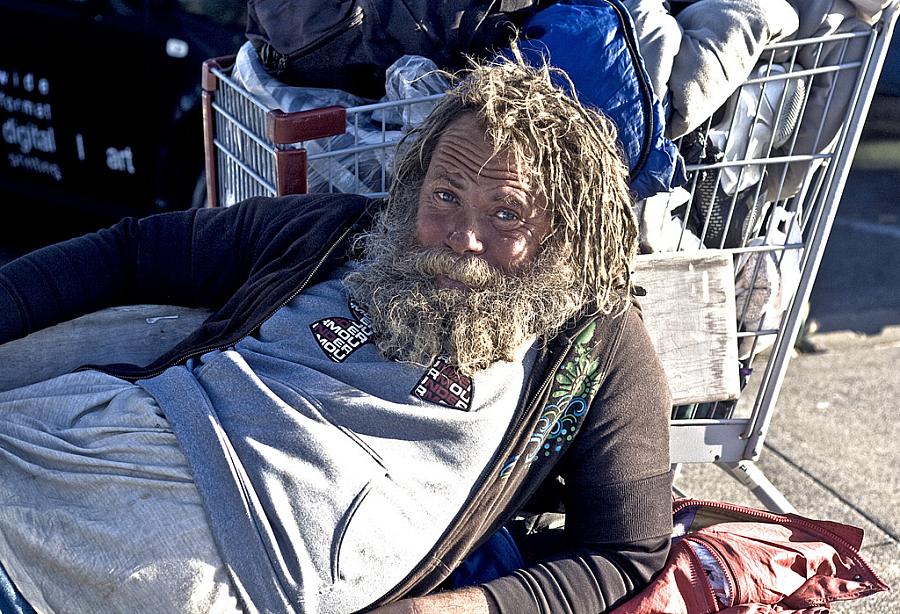Street Medicine: How Doctors are Helping the Homeless in Their Communities

At the 2012 conference for the National Health Care for the Homeless Council this past May in Kansas City, Mo., a woman walked up to the registration desk and told the group that she had recently spent time on the streets. She told them that whenever she got access to a computer during that period, she would go to their Web page and look at the staff’s photographs. Those faces reminded her there were people out there who cared.
Providing comfort only skims the surface of what the NHCHC and similar groups do for the homeless. In “street medicine,” also dubbed "suitcase health care," providers take their health services directly to the streets.
The practice began as a handful of lone wolf physicians walking the streets decades ago. Organized programs began popping up in the late 80s and early 90s as a response to the increasingly visible issue of homelessness, now estimated to affect two to three million people annually. About one-third of the homeless don’t receive health care through free clinics or hospitals, according to Dr. Patrick Perri, chair of the board of directors of the Street Medicine Institute.
Perri said his group knows of 84 structured street medicine practices around the world. These groups are funded, sparsely, by institutions like hospitals, departments of public health, nonprofit organizations and universities. The Health Resources and Services Administration funds programs each year as well. Almost 9 percent of HRSA’s $2 billion annual budget is appropriated to healthcare for the homeless, said John Lozier, executive director of the National Health Care for the Homeless Council.
Because copy space is at a premium and homelessness is far from sexy as a news topic, here are some tips about how to sell this kind of story to your editor.
First is the intense humanity of the topic. Perri said homeless people have the highest mortality rate of any group in the nation. The mean age of death for people chronically living on the streets is 47. Yes, 47.
Because we all know that kind of argument, however compelling, doesn’t always fly in a newsroom, here are a couple others. One is money.
Homeless people almost always have complex medical issues and typically have co-existing conditions that include substance abuse and behavioral or mental health conditions. Lozier said they are also three to six times more likely than the general population to have chronic diseases like diabetes and hypertension. They don’t receive proper primary care and over-use emergency rooms, which equals money out of everyone’s pockets. For an example of how one homeless patient cost one county nearly $1 million in safety net care, read Sarah Arnquist's essay on reporting on homeless health care.
Finally, homeless people can be a good litmus test for a local health system, Perri said. It is such a difficult, challenging population to reach, that seeing how they are cared for can highlight both the flaws and effectiveness in the way care is provided.
If you are able to cover the field of street medicine, Dr. Jan Gurley, a blogger and physician at a clinic for the homeless in San Francisco, offered some tips on how to do it well.
Though it might seem like an obvious statement: be safe. It is easy to find yourself in a compromising situation or let your guard down when interviewing people.
“If someone’s life depends on finding a few bucks before sunset, you don’t want to be the person walking around by a homeless shelter alone with an iPod doing an interview,” Gurley said. She recommends meeting individuals through a program or in a hospital waiting room. If you are going to go to someplace like a food bank line, take someone else with you.
She also cautioned that you may be asked to jump through many hoops to get people to talk with you or to help you connect with homeless people. Providers often are extremely protective of these patients. But they will come through.
While these stories may be challenging, they can also be highly rewarding. “It helps us realize that people experiencing homelessness are not ‘the other’ – they are us and members of our community,” Perri said. “It becomes our problem and not their problem.”
Related Content:
The Million Dollar (Homeless) Patient: Calculating the health care costs of chronic homelessness
PTSD and the Homeless: Shell-Shocked on Your Streets
A Frequent Flyer without a Plane to Catch
Photo credit: Alex Bellink via Flickr

